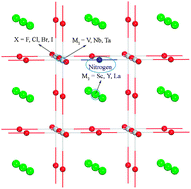Codoping synergistic effects in N-doped SrTiO3 for higher energy conversion efficiency†
Abstract
To understand the codoping synergistic effects in metal

* Corresponding authors
a School of Physics, State Key Laboratory of Crystal Materials, Shandong University, Jinan 250100, P. R. China
To understand the codoping synergistic effects in metal

 Please wait while we load your content...
Something went wrong. Try again?
Please wait while we load your content...
Something went wrong. Try again?
W. Wei, Y. Dai, M. Guo, L. Yu, H. Jin, S. Han and B. Huang, Phys. Chem. Chem. Phys., 2010, 12, 7612 DOI: 10.1039/B922399A
To request permission to reproduce material from this article, please go to the Copyright Clearance Center request page.
If you are an author contributing to an RSC publication, you do not need to request permission provided correct acknowledgement is given.
If you are the author of this article, you do not need to request permission to reproduce figures and diagrams provided correct acknowledgement is given. If you want to reproduce the whole article in a third-party publication (excluding your thesis/dissertation for which permission is not required) please go to the Copyright Clearance Center request page.
Read more about how to correctly acknowledge RSC content.
 Fetching data from CrossRef.
Fetching data from CrossRef.
This may take some time to load.
Loading related content
